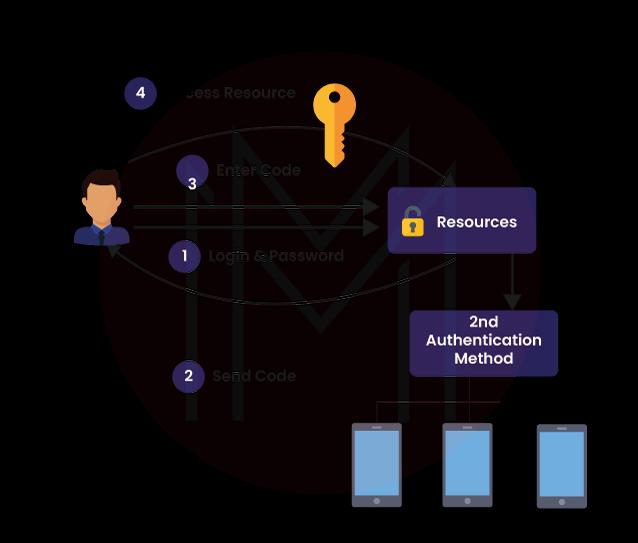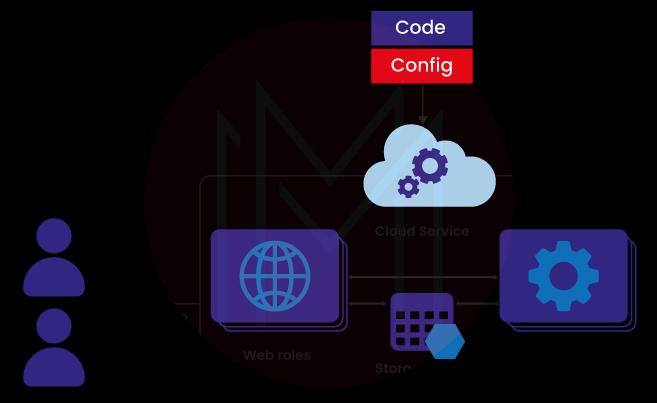- Home
- Blog
- Microsoft Azure
- Azure Administrator Interview Questions

- Azure Active Directory
- Azure Active Directory B2C
- Azure Active Directory Domain Services
- Azure Analysis Services
- Azure App Services
- What is Azure Application Insights?
- Azure Arc
- Azure Automation - Benefits and Special Features
- A Complete Guide On Microsoft Azure Batch
- Azure Cognitive Services
- Azure Data Catalog
- Azure Data Factory - Data Processing Services
- Microsoft Azure Data Factory Tutorial (2024)
- Everything You Need To Know About Azure Data Lake
- Azure DNS - Azure Domain Name System
- Azure ExpressRoute
- Azure Functions - Serverless Compute
- Azure Interview Questions and Answers (2024)
- Azure IoT Edge Overview
- Azure IoT Hub
- What Is Azure Key Vault??
- Azure Load Balancer
- Azure Logic Apps - The Lego Bricks to Serverless Architecture
- Azure Machine Learning
- Microsoft Azure Media Services
- Azure Monitor
- Introduction To Azure SaaS
- Azure Security Center
- Azure Service Bus
- Overview of Azure Service Fabric
- Azure Site Recovery
- Azure SQL Data Warehouse
- Azure Stack - Cloud Services
- Azure Stream Analytics
- Azure Virtual Machine
- Azure’s Public Cloud
- Microsoft Azure Application Gateway
- Microsoft Azure Certification Path
- Microsoft Azure - Exactly What You Are Looking For!
- Microsoft Azure Fabric Interview Questions
- HDInsight Of Azure
- IS Microsoft Azure Help To Grow?
- Microsoft Azure Portal
- Microsoft Azure Traffic Manager
- Microsoft Azure Tutorial
- Overview of Azure Logic Apps
- Top 10 Reasons Why You Should Learn Azure And Get Certified
- Server-Less Architecture In Azure
- What is Microsoft Azure
- Why Azure Machine Learning?
- Azure DevOps Interview Questions
- Azure Active Directory Interview Questions
- Azure DevOps vs Jira
- What is Azure Service Fabric
- What is Azure Databricks?
- Azure Databricks Interview Questions
- Azure Data Factory Interview Questions
- Azure Architect Interview Questions
- Azure Data Studio vs SSMS
- Microsoft Interview Questions
- What is Azure Data Studio - How to Install Azure Data Studio?
- Azure DevOps Projects and Use Cases
- Azure Data Factory (ADF) Integration Runtime
- Azure DevOps Delivery Plans
- Azure DevOps Variables
- Azure DevOps vs GitHub
- Azure DevOps Pipeline
Microsoft Azure is a popular and rapidly growing cloud service provider. When it comes to professionals, administrators are the most in-demand in the IT industry.
Most students are already preparing to become skilled Azure admins. We made a list of the most frequently asked interview questions about being an Azure admin to help you prepare for your upcoming interview.
We at Mindmajix! We want to make sure you succeed in becoming an Azure professional, so in addition to these azure interview questions, we have developed the best questions with possible answers that will give you a thorough grounding in all the topics you'll need to score good marks in the Azure exam.
We have provided the Azure administrator interview questions based on:
Top 10 Frequently Asked Azure Administrator Interview Questions
- What is the function of an Azure Administrator?
- What are the administrative responsibilities?
- What is Microsoft Azure, and how is it used?
- What is Azure Databricks?
- What is Azure Service Fabric?
- What is Azure's CSPack?
- What is the use of Azure Active Directory?
- What is Azure AD Multi-Factor Authentication?
- How many cloud service roles does Azure offer?
- How can Azure deploy web applications?
Azure Administrator Interview Questions For Freshers
1) What is the function of an Azure Administrator?
The Azure Administrator is responsible for configuring, managing, and monitoring the cloud platform's virtual networks, storage, computing resources, and identity systems. The Azure Administrator is in charge of resource provisioning, scaling, monitoring, and changes.
| If you would like to enrich your career in Microsoft Azure, then visit Mindmajix - A global Online training platform “Microsoft Azure training course.”This course will help you to achieve excellence in this domain. |
2) How can you become an Azure Administrator?
Learning cloud computing skills from a reliable source and earning Microsoft's certification qualify anyone to work as an Azure Admin.
3) What are the administrative responsibilities?
Administrators are important to the smooth running of a business because they help people or teams with administrative tasks. They might answer the phone, show guests where to go, greet them, process words, and make spreadsheets, presentations, and files.
4) What topics does Azure Administrator cover?
- Practical knowledge of Kubernetes and Docker for virtualization.
- Knowledge of Azure Administrator based on roles.
- Options for storing hard drives, virtual database files, application data, Etc.
- Preventing unauthorized data access. Ensure that data backups can be restored.
5) What is Microsoft Azure, and how is it used?
Cloud providers are businesses that provide cloud services. Microsoft Azure is only one of several companies that provide cloud services. It serves as a gateway to Microsoft's cloud computing infrastructure.
| Related Blog: Microsoft Azure Portal Pro-Tips |
6) Can you describe the Microsoft Azure Cloud Service?
Azure Cloud Service is a typical example of a platform as a service (PaaS). It was created to support applications that require high dependability, scalability, and availability while remaining cost-effective. These are hosted on virtual machines (VMs), and Azure gives developers greater control by allowing remote software installation and management.
7) What is Azure Active Directory? What is its relationship to subscriptions?
Managing the Azure resources will be easier with the help of azure active directory, or Azure AD for short.
The relationship between subscriptions and an azure active directory is one of many to one. Multiple azure subscriptions can trust a single azure active directory instance.
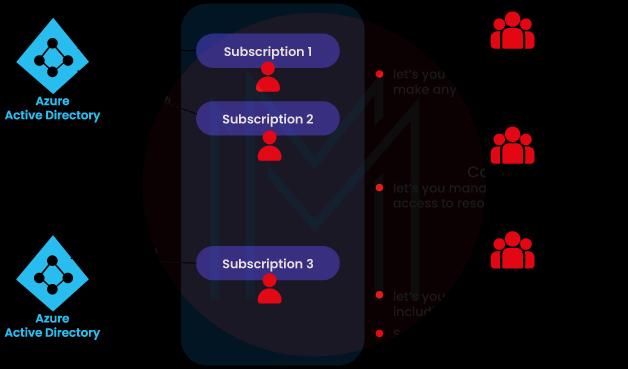
8) Define Azure Subscriptions.
An Azure subscription is a way to access Azure resources logically. It holds information about your resources, such as databases, virtual machines (VMs), and more. When you make an Azure resource, like a virtual machine, you set it apart from the subscription it is part of.
Azure subscription denotes
- Entity for billing and the security boundary.
- A place where users can go.
- How much do Azure services cost each month?
9) Which is better, Google Cloud Platform Cloud AutoML or Microsoft Azure ML Studio?
When contrasting the two, Azure ML Studio comes out on top due to its comprehensive features, including classification, regression, anomaly detection, clustering, recommendation, and ranking.
However, GCP Cloud AutoML has built-in support for clustering, regression, and recommendation. Azure also has convenient drag-and-drop features that save time and effort.
10) Explain in detail the Azure Machine Learning Text Analysis API.
The Text Analysis API is a collection of web services for analyzing text. Extracting relevant information and analyzing sentiment from the unstructured text are two of its primary functions. It gives out numbers between 0 and 1, which can be interpreted as positive or negative feelings.
11) Which Azure service manages Azure resources?
Some of the azure services that manage resources are
- Application Insights
- Azure Resource Manager
- Azure Portal
- Log Analytics
12) What is Azure AD Multi-Factor Authentication?
During multi-factor authentication, a user must provide multiple forms of identification during sign-in. For example, they might be asked to enter a code on their phone or scan their fingerprint.
When using azure active directory multi-factor authentication, two or more of the following forms of authentication are needed:
- Usually, this is a password that you know.
- Something you have, like a phone or hardware key, that you trust and can't easily copy.
13) How does Azure CLI create a virtual machine (VM)?
az VM creates
--resource-group myResourceGroupName `
--name myVM --image win 2016 datacenter `
--admin-username AzureuserNAME `
--admin-password AzurePASSWORD
Azure Administrator Interview Questions For Experienced
1) How many cloud service roles does Azure offer?
Cloud service roles comprise a collection of configuration and application files. Azure provides two distinct types of roles:
- Worker role: These roles enable the applications they host to run asynchronously for long periods, unaffected by user interactions, and frequently not use IIS. They're also useful for background tasks. The programs operate independently of one another.
- Web role: This provides an IIS (Internet Information Services) dedicated web server to automatically deploy and host front-end websites.
2) Why do we need the Azure Diagnostics API?
- We can collect diagnostic data from Azure applications such as performance monitoring, system event logs, and so on.
- To monitor data verbosely for cloud service roles, Azure Diagnostics must be enabled.
- Diagnostics data can be used to create visual chart representations for better monitoring and performance metric alerts.
| “Attending an interview for Windows Admin Jobs, then preparing well using Windows Administrator Interview Questions.” |
3) What kinds of cloud deployment models exist?
Below are the three cloud deployment models.
- Public Cloud: Your cloud provider owns the infrastructure, and your server might be shared with others.
- Private Cloud: You manage the infrastructure, or your cloud provider offers only that service. You could host your website on a cloud service provider's dedicated server or your servers.
- Hybrid Cloud: Hybrid Cloud refers to a setup in which both public and private cloud services are used. Host your company's website in the cloud but keep sensitive information on your own servers. A hybrid cloud would describe this setup.
4) Why does Azure Websites have a "Migration Assistant" tool?
Using the Migration Assistant, you can check out your IIS configuration. Assists in determining which server can be moved to the cloud. There are parts of it that still need to be migrated to Azure or need to be supported there.
5) How can Azure deploy web applications?
Applications that are deployable use either ASP.NET, PHP, or WCF.
6) What is the best way to run the code without a server in Azure?
- Without a server, code can be executed using the Azure Functions service.
- Azure Functions without a server simplify complex orchestration and challenging resolutions. They are intended to be stateless and transient.
- They facilitate integration with other services without requiring manual coding, accelerating the development process.
- It allows the developer to focus on writing and implementing business logic code, saving time and effort.
- Azure Application Insights also provides monitoring and analysis of code performance, enabling the identification of bottlenecks and failure points across the application's components.
7) How is AWS different from Microsoft Azure?
Depending on your perspective, the answer will be either yes or no.
It is commonly agreed that Azure is preferable because it is a Microsoft product and thus makes it simpler for businesses to migrate to the cloud if they already use Windows Server, SQL Server, and Exchange. In addition, Azure stands out compared to AWS because Microsoft has a comprehensive understanding of developer tools.
8) What does it mean to have an availability set?
Azure can understand the redundancy and availability features your application is designed to provide by using availability sets, which are logical groups of virtual machines (VMs).
It is advised that two or more virtual machines be created within an availability set to create a highly available application and guarantee compliance with Azure's 99.95% SLA. The Azure SLA protects against unplanned downtime when used with a single VM in Azure Premium Storage.
9) How do Fault Domains work?
A logical grouping of hardware that shares a network switch and power supply is referred to as a fault domain. The virtual machines (VM) you create as part of an availability set are automatically distributed across these fault domains by the Azure platform. This tactic mitigates the impact of potential hardware and network failures.

10) What are Update Domains?
A logical collection of the underlying hardware that can be maintained or restarted simultaneously is known as an update domain. The Azure platform automatically distributes the virtual machines you create within an availability set across these update domains.
11) What are Network Security Groups, and what do they do?
A network security group (NSG) is a group of Access Control List (ACL) rules that control whether network traffic can reach specific NICs (network interface cards), subnets, or both. NSGs can be linked to specific NICs connected to one or more subnets. ACL restrictions apply to all VMs in a subnet with an NSG connection.
12) Do Azure availability and scale sets work together?
Yes. The five fault domains and five update domains that make up a scale set constitute an implicit availability set. Scale sets with more than 100 virtual machines (VMs) are distributed across several placement groups, representing several availability sets.
A scale set of VMs and an availability set of VMs can coexist in the same virtual network. A standard configuration is to place control node virtual machines (VMs) in an availability set and data nodes in a scale set.
13) What is the use of Azure Active Directory?
Azure Active Directory (Azure AD) is a cloud-based identity and access management service provided by Microsoft that allows your employees to sign in and access resources in the cloud.
- External resources like the Azure portal, Microsoft 365, and other SaaS apps.
- Internal resources include apps on your company's intranet and network and any cloud apps that your company made.
Most Common Azure Administrator FAQs
1) What is Azure Service Fabric?
Microsoft's Azure Service Fabric is a distributed-systems platform that makes it easier to package, deploy, and manage highly available, scalable microservices.
Service Fabric also addresses key difficulties associated with developing and maintaining cloud-based applications. By avoiding complicated infrastructure concerns, administrators and developers may create scalable, dependable, and manageable mission-critical and demanding workloads. Service Fabric is the next-generation middleware platform for designing and administering these enterprise-class, tier-1, cloud-scale applications.
2) What is Azure Redis Cache, and how does it work?
Redis is a free, open-source, in-memory data structure store that operates under the BSD license—used for storing data, caching recently accessed data, and relaying messages, among other things.
Azure Redis Cache is modeled after the famous open-source Redis cache. Any Azure app can now use Microsoft's dedicated, encrypted Redis cache management. Strings, lists, hashes, range-queryable sorted sets, sets, bitmaps, and radius-queryable geospatial indices are all supported.
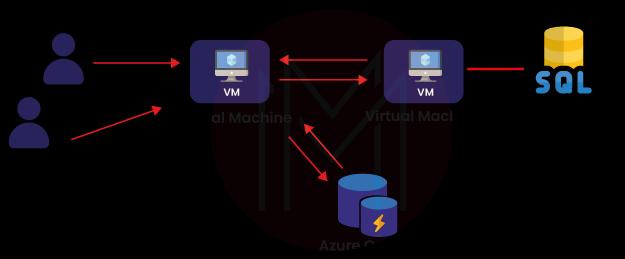
3) What is Azure Search used for?
Azure Search transfers server and infrastructure management to Microsoft, leaving you with an up-and-running service that you can use to add search to your mobile application or web after populating it with your data.
Azure Search allows you to quickly add a powerful search experience to your applications using a.NET SDK or REST API without managing search infrastructure or becoming a search expert.
4) What is Azure Databricks?
Azure Databricks' data analytics platform provides two environments for developing data-intensive applications:
- Azure Databricks Workspace
- Azure Databricks SQL Analytics
Microsoft Azure Databricks' compatibility with the natively provided security, analytics, compute, AI and storage services from cloud providers pave the way for consolidating AI-based workloads.
| Related Blog: What is Azure Databricks? |
5) What is Azure's CSPack?
CSPack is a command-line tool that makes the service package file and gets an app ready for deployment in Azure or Compute Emulator. Every project with a cloud service type has a configuration file .cscfg file, which was made with CSPack.
6) Why is Azure used to fix IP addresses?
A static IP address is used when a device connected to Azure should not have its address changed.
7) What is a guest OS in Microsoft Azure?
When you host a role instance in a virtual machine, the Guest OS is the OS that controls the VM.
8) What does a VNet mean?
Virtual Network (VNet) is the cloud-based analog of your physical network. Your newly launched cloud instances can be logically isolated from the rest of your resources.
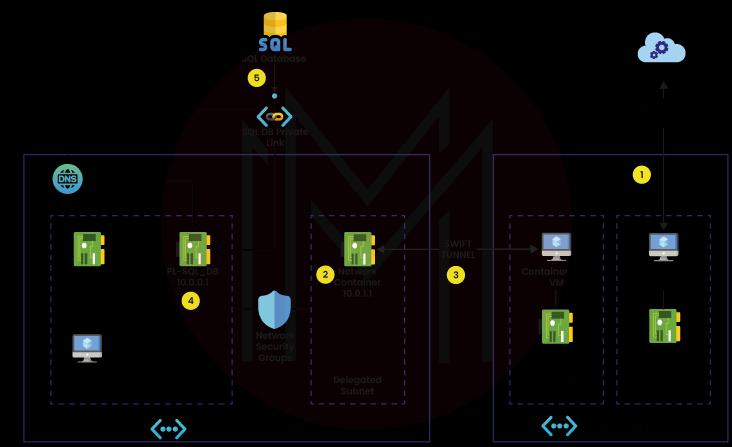
9) Is it possible to add an existing VM to an availability set?
No. Virtual machines can only be included in an availability set if they are initially created within that set. You can't add a freshly created VM to an existing availability set.
10) How can I find a list of the already integrated Azure AD apps and what they can do?
About 2600 applications are already set up to work with Azure AD.
All apps have already been connected to a single sign-on system (SSO). SSO lets you use the login information for your organization to get into your apps. Some applications also allow provisioning and de-provisioning to be done automatically.
Conclusion
Businesses can get over roadblocks and accomplish their goals with the help of the Azure platform. It's open-source, technology-friendly and has resources for any field. Take the help of the above provided Azure Admin Interview questions to increase your knowledge and skills, which will help you succeed in the Azure Admin Interview.
 On-Job Support Service
On-Job Support Service
Online Work Support for your on-job roles.

Our work-support plans provide precise options as per your project tasks. Whether you are a newbie or an experienced professional seeking assistance in completing project tasks, we are here with the following plans to meet your custom needs:
- Pay Per Hour
- Pay Per Week
- Monthly
| Name | Dates | |
|---|---|---|
| Azure Training | Dec 20 to Jan 04 | View Details |
| Azure Training | Dec 23 to Jan 07 | View Details |
| Azure Training | Dec 27 to Jan 11 | View Details |
| Azure Training | Dec 30 to Jan 14 | View Details |

Madhuri is a Senior Content Creator at MindMajix. She has written about a range of different topics on various technologies, which include, Splunk, Tensorflow, Selenium, and CEH. She spends most of her time researching on technology, and startups. Connect with her via LinkedIn and Twitter .
